Ophthalmology Procedures
- Lifestyle Lenses for Cataracts
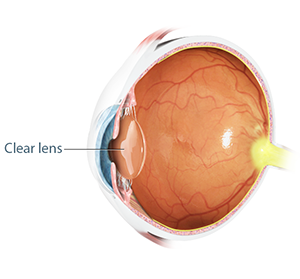
Standard intraocular lenses are usually designed to provide clear distance vision after cataract surgery, but eyeglasses are needed for near and intermediate vision.
Know More - Toric Lenses
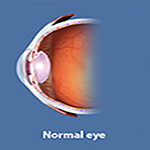
Toric lens also called toric intraocular lens, is an artificial replacement for the natural lens in your eye. It is used to treat vision problems such as astigmatism and reduce dependency on spectacles, especially after cataract surgery.
Know More - Multifocal Lens Implant

Multifocal lens implant, also called multifocal intraocular lens (IOL) implant, is an artificial replacement for the natural lens in your eye.
Know More - Refractive Lens Exchange

Refractive Lens Exchange (RLE), also known as Clear Lens Exchange (CLE), is a surgical procedure to correct refractive errors in which the natural lens of the eye is removed and replaced with an artificial intraocular lens.
Know More - Cataract Surgery in People with Retinal Diseases

Retinal diseases are conditions or disorders that affect your retina causing visual symptoms such as blurred vision. The retina is a thin layer of tissue present on the inner surface of the back of your eyeball.
Know More - Age-Related Macular Degeneration
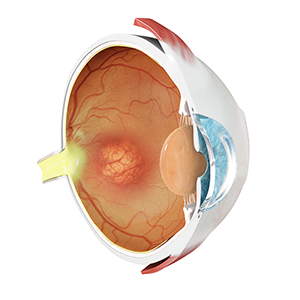
Age-related macular degeneration (AMD) is the leading cause of legal blindness in the elderly Caucasian population but is relatively rare in other races.
Know More - Diabetic Retinopathy
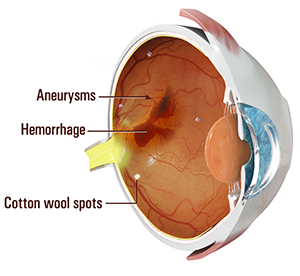
Diabetic retinopathy is the leading cause of acquired blindness among people under the age of 65. The great majority of this blindness can be prevented with proper examination and treatment by ophthalmologists (eye MDs).
Know More - Retinal Vascular Diseases

Retinal vascular diseases, also called retinal vascular disorders include eye conditions such as diabetic retinopathy, hypertensive retinopathy, age-related macular degeneration (AMD), central retinal vein occlusion (CRVO), and retinal artery occlusion (RAO).
Know More - Anti VEGF

Anti-VEGF treatments involve the injection of a specific group of medicines known as anti-VEGF drugs into the eye to stabilize or improve vision in patients with certain eye conditions.
Know More - Eylea (Aflibercept)
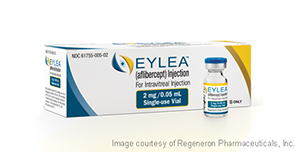
Eylea (Aflibercept) is a new FDA approved drug developed for the treatment of wet age-related macular degeneration (wet AMD).
Know More - Lucentis

Lucentis is the brand name of the anti-VEGF drug ranibizumab, which is injected into the eye to treat patients with certain eye conditions by slowing down vision loss.
Know More - Avastin

Avastin is the brand name of the anti-VEGF drug bevacizumab, which is injected into the eye to treat patients with certain eye conditions by slowing down vision loss.
Know More - Intravitreal Steroids

Intravitreal steroids are anti-inflammatory medications that are placed into the centre of the eyeball, which is known as the vitreous cavity, to help reduce swelling, improve vision, and alleviate eye pain in patients with certain inflammatory eye conditions.
Know More - Ozurdex

OZURDEX is a tiny corticosteroid implant that is injected into the centre of the eyeball, which is known as the vitreous cavity, to help reduce swelling, improve vision, and alleviate eye pain in patients with certain inflammatory eye conditions.
Know More - IIuvien

ILUVIEN is a corticosteroid micro-implant that is injected into the centre of the eyeball, which is known as the vitreous cavity, to help reduce swelling, improve vision, and alleviate eye pain in patients with diabetic macular oedema who have been treated with corticosteroids in the past without having significant increased intraocular pressure.
Know More - Retinal Laser (Pattern and Micropulse/Subliminal Laser)

The Pattern Scanning Laser (PASCAL) system is an advancement of laser photocoagulation therapy for the eyes based on input from clinical experts and recent technologies.
Know More - Oral Immunosuppression for Uveitis

Ocular inflammation refers to swelling and inflammation of the eye tissue. The part of the eye that is commonly affected is the middle layer of the eye known as the uvea. Inflammation of the uvea is known as uveitis.
Know More - Treatment for Cataract

Surgery is the only treatment for cataracts and is recommended based on the severity of the condition and the impact it has on the daily activities of the patient. It is performed one eye at a time with a few weeks gap in between the two operations.
Know More - Cataract Surgery in Diabetics

Diabetes is a chronic metabolic disorder characterised by hyperglycemia or presence of high sugar (glucose) levels in the blood. It is one of the main factors that cause development of cataracts. An estimated 60 per cent of the people with diabetes are at increased risk of developing cataracts.
Know More - YAG Capsulotomy
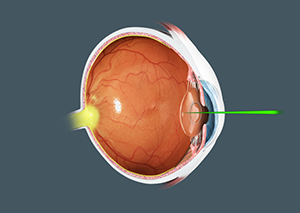
YAG capsulotomy is a procedure that is used in the treatment of posterior capsular thickening which is a common but long-term complication of cataract surgery.
Know More - YAG Iridotomy

Coming Soon
Know More - Macular Laser for Central Serous Retinopathy

Laser treatment is considered to restore vision if central serous retinopathy does not resolve in 2-3 months and there are recurrent episodes of retinal detachment (detachment of the retina from its underlying layers of tissue).
Know More - Macular Laser for Macular Oedema

Laser photo-coagulation is the standard treatment for macular oedema that is caused as a complication of diabetes or retinal vein occlusion. The goal of the surgery is to reduce the swelling in the macula.
Know More - Cataract Surgery in Ocular inflammation

Ocular inflammation is the inflammation of eye tissue layers. Uveitis is the most common form of ocular inflammation. The condition results in the inflammation of the middle layer of the eye (uvea) causing swelling and destruction of eye tissues.
Know More - Retinal Laser Therapy

Retinal laser therapy or focal laser photocoagulation is a procedure performed to preserve the health of the retina, the photosensitive layer in the back of the eye. It can treat conditions such as macular oedema and breaks or tears in the retina which can lead to loss of vision.
Know More - Treatment of Posterior Uveitis

Posterior uveitis causes inflammation in the back part of the uvea (middle layer of the eye which provides blood supply to the retina). Based on the cause and severity of the condition, our doctors will review the various options of treatment.
Know More - Selective Laser Trabeculoplasty
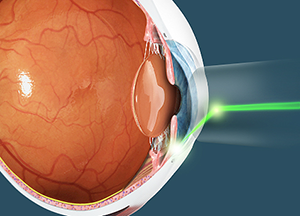
Selective laser trabeculoplasty is a laser treatment used in open-angle glaucoma and ocular hypertensive patients.
Know More - Treatment of Glaucoma

The goal of glaucoma treatment is to decrease the pressure in the eyes. This is achieved using special eye-drops or medications.
Know More - Retinal Disease Treatment

Retinal diseases are conditions or disorders that affect your retina causing visual symptoms. The retina is a thin layer of tissue present on the inner surface of the back of your eyeball.
Know More - Intraocular Lens (IOL)
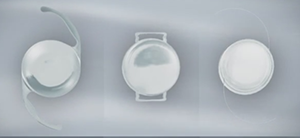
An intraocular lens or IOL is an artificial replacement for the natural lens in your eye. Cataracts cause the normally clear lens to become cloudy, adversely affecting your vision.
Know More - Digital Retinal Photography

The retina, the tissue that lines the back of the eye, is the region where many significant systemic diseases, as well as eye diseases, are manifested.
Know More - Intravitreal Injection for Macular Oedema
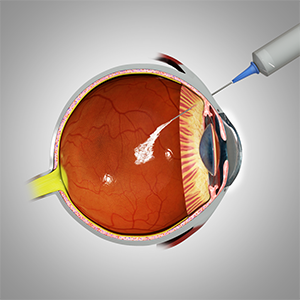
An intravitreal injection is a non-invasive eye procedure where medication is injected into the vitreous cavity - the space at the back of your eyes, near the retina.
Know More - Treatments for Diabetic Macular Oedema

Laser photocoagulation is the mainstay treatment for diabetic macular oedema. It is the process of sealing leaking blood vessels, by focusing an intense beam of light (laser), to stop the excess accumulation of fluid in the macula.
Know More - Treatments for ARMD

ARMD or age-related macular degeneration is an eye condition that causes damage to your macular and affects your central vision.
Know More - Ocular Ultrasound

Ocular ultrasound, also known as ocular ultrasonography, “echo,” or a B-scan, is a non-invasive, safe diagnostic test employed to evaluate structural integrity and pathologies of the eye.
Know More - Gonioscopy

Gonioscopy is an examination of the anterior region of your eye (between the cornea and iris). It is primarily indicated to diagnose glaucoma (build-up of pressure in the eye).
Know More - Panretinal Photocoagulation

Patients with proliferative diabetic retinopathy are best treated with pan-retinal laser photocoagulation (PRP). During PRP, your surgeon will create small burns on your retina to destroy abnormal and leaking blood vessels.
Know More - Panretinal Photocoagulation for Ocular Ischemic Syndrome

OIS is a rare condition that occurs due to ocular hypoperfusion (a condition where the blood supply to tissues is restricted, resulting in a lack of oxygen and glucose required for metabolism, also called ischemia).
Know More - Treatment for Vein Occlusions

Retinal vein occlusion can lead to fluid buildup and swelling of the macula, a condition known as macular oedema.
Know More - Treatment of Acute/Chronic/Recurrent Iridocyclitis

The treatment strategy of iridocyclitis is directed to treat any underlying disease that may be a causal factor for iridocyclitis.
Know More












